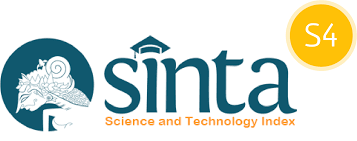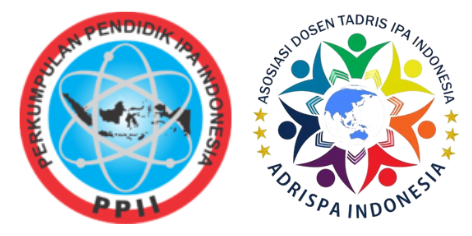Pengaruh Penerapan Model Pembelajaran Student Team Achievement Divisions (STAD) terhadap Hasil Belajar IPA Siswa Kelas VIII SMP Aloysius Bandung
DOI:
https://doi.org/10.35719/vektor.v1i1.10Keywords:
cooperative learning, learning outcomes, student team achievement divisionAbstract
Tujuan penelitian ini adalah mengetahui perbedaan hasil belajar IPA siswa kelas VIII dengan menggunakan model pembelajaran Student Team Achievement Divisions (STAD) dan model pembelajaran konvensional. Penelitian ini merupakan penelitian kuantitatif dengan metode kuasi eksperimen. Sumber data penelitian ini adalah siswa kelas VIII D dan VIII E SMP Santo Aloysius Bandung. Pengumpulan data menggunakan instrumen tes. Analisis data dilakukan untuk menentukan nilai rata-rata, persentase ketuntasan kelas, dan uji hipotesis. Hasil penelitian menunjukan bahwa nilai rata-rata pre-test kelas eksperimen adalah 11 dan kelas kontrol adalah 10. Nilai rata-rata post-tes kelas kontrol adalah 81 dan kelas eksperimen adalah 87. Persentase ketuntasan kelas kontrol adalah 83% dan kelas eksperimen adalah 100%. Hasil uji statistik diperoleh harga t = 2.058, db= 47 dan sig. (2-tailed) atau p-value = 0.045/2 = 0.023 < 0.05, atau H0 ditolak. Hasil uji statistik tersebut menunjukan adanya perbedaan skor kedua kelas tersebut. Skor kelas yang diajar dengan model STAD lebih tinggi daripada skor di kelas yang diajar dengan model pembelajaran konvensional.
Kata Kunci: pembelajaran kooperatif, hasil belajar, student team achievement division
The purpose of this research was to determine the differences in learning outcomes of natural science students in class VIII using the Student Team Achievement Divisions (STAD) learning model and quasi-experimental method. This research is a quantitative study with a quasi-experimental method. The data source of this study were students of class VIII D and VIII E of St. Aloysius Junior High School in Bandung. Data collection using test instruments. Data analysis was performed to determine the average value, the percentage of class completeness, and hypothesis testing. The results showed that the average pre-test value of the experimental class was 11 and the control class was 10. The average post-test value of the control class was 81 and the experimental class was 87. The percentage of completeness of the class for the control class was 83% and the experimental class was 100% Statistical test results obtained a t value of 2.058, db = 47 and sig. (2-tailed) or p-value = 0.045 / 2 = 0.023 <0.05, or H0 is rejected. The results of the statistical tests show differences in the scores of the two classes. Class scores taught with the STAD model are higher than class scores taught with conventional learning models.
Downloads
Published
How to Cite
Issue
Section
License
Copyright (c) 2020 VEKTOR: Jurnal Pendidikan IPA

This work is licensed under a Creative Commons Attribution-ShareAlike 4.0 International License.
Authors who publish with this journal agree to the following terms:
- Authors retain copyright and grant the journal right of first publication with the work simultaneously licensed under the terms of the CC BY-SA 4.0 License that allows others to share the work with an acknowledgment of the work's authorship and initial publication in this journal.
- Authors are able to enter into separate, additional contractual arrangements for the non-exclusive distribution of the journal's published version of the work (e.g., post it to an institutional repository or publish it in a book), with an acknowledgment of its initial publication in this journal.
- Authors are permitted and encouraged to post their work online (e.g., in institutional repositories or on their website) prior to and during the submission process, as it can lead to productive exchanges, as well as earlier and greater citation of published work.







